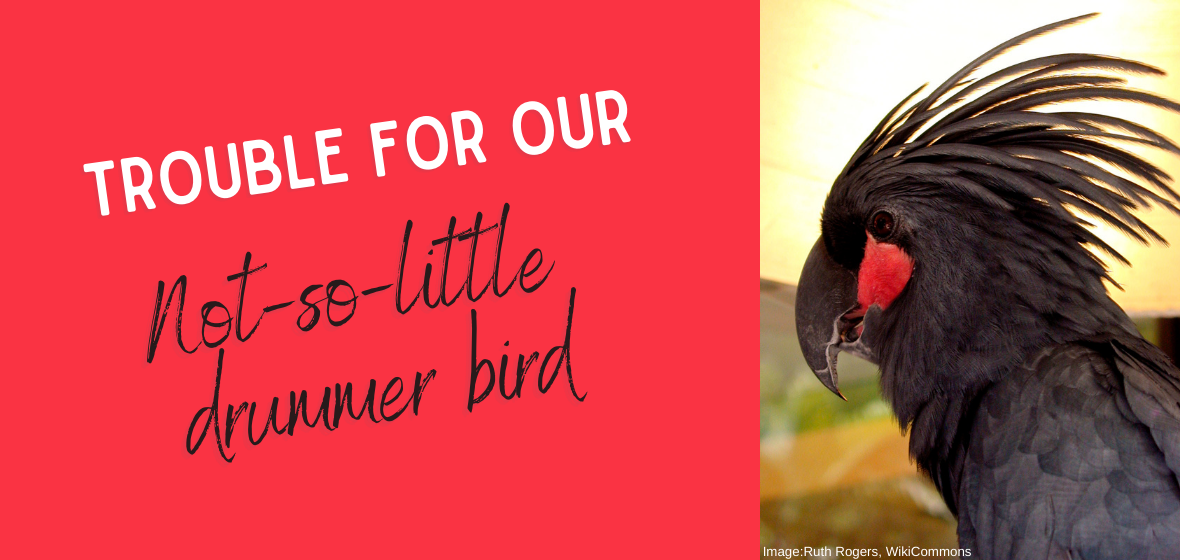22 November 2021
Recent research from Dr Christina Zdenek and Prof Rob Heinsohn published in Biological Conservation finds that the spectacular palm cockatoo looks set to face population declines of 47% to 95% over the next fifty years, which could reduce its number to just 150 individuals.
The largest of all Australian parrots, the palm cockatoo (Probosciger aterrimus) is notable for much more than its size. It has a diverse and complex vocal range, an enormous bill, a spectacular crest, and ‘blushing’ crimson cheek pads.
Most remarkable of all is the male cockatoo’s habit of using a tool (a carefully selected stick) to drum against a hollow tree trunk or branch, producing a reverberating sound. Although considered the only non-human animal known to generate rhythm in this way, the Australian population of these extraordinary and evolutionarily ancient birds is in deep, deep trouble.
Inhabiting only the northern part of Cape York, this species was just this month relisted as endangered in Queensland under the Nature Conservation Act 1992. Palm cockatoos are profoundly impacted by land clearing, as well as by the inappropriate and damaging fire management regimes that followed European settlement. Adding to their vulnerability is these birds’ incredibly low reproductive rate and high rate of chick mortality (only 23% of chicks survive to fledgling age).
Researchers Dr Christina Zdenek (UQ) and Prof Rob Heinsohn (ANU) recently published an article in The Conversation, explaining what must be done to reverse declines and allow them to thrive. It’s accompanied by some stunning imagery in this short 2017 documentary featuring the same research team.
Drum on, Palmies, drum on!
Thanks to Liz Downes from Wildlife Queensland Townsville for the report. To read more about the work being done in Townsville, please visit the branch page.

